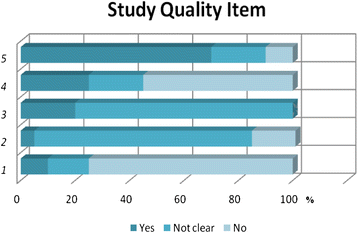Current concepts and future of noninvasive procedures for diagnosing oral squamous cell carcinoma--a systematic review
- PMID: 25889859
- PMCID: PMC4396078
- DOI: 10.1186/s13005-015-0063-z
Current concepts and future of noninvasive procedures for diagnosing oral squamous cell carcinoma--a systematic review
Abstract
Background: Oral squamous cell carcinoma (OSCC) has a remarkably high incidence worldwide, and a fairly serious prognosis, encouraging further research into advanced technologies for noninvasive methods of making early diagnoses, ideally in primary care settings.
Objectives: Our purpose was to examine the validity of using advanced noninvasive technologies in diagnosis of OSCC by identifying and evaluating relevant published reports.
Data source: MEDLINE, EMBASE, and CINAHL were searched to identify clinical trials and other information published between 1990 and 10 June 2014; the searches of MEDLINE and EMBASE were updated to November 2014.
Study selection: Studies of noninvasive methods of diagnosing OSCC, including oral brush biopsy, optical biopsy, saliva-based oral cancer diagnosis, and others were included.
Data extraction: Data were abstracted and evaluated in duplicate for possible relevance on two occasions at an interval of 2 months before being included or excluded.
Data synthesis: This study identified 163 studies of noninvasive methods for diagnosing OSCC that met the inclusion criteria. These included six studies of oral brush biopsy, 42 of saliva-based oral diagnosis, and 115 of optical biopsy. Sixty nine of these studies were assessed by the modified version of the QUADAS instrument. Saliva-based oral cancer diagnosis and optical biopsy were found to be promising noninvasive methods for diagnosing OSCC.
Limitation: The strength of evidence was rated low for accuracy outcomes because the studies did not report important details required to assess the risk for bias.
Conclusions: It is clear that screening for and early detection of cancer and pre-cancerous lesions have the potential to reduce the morbidity and mortality of this disease. Advances in technologies for saliva-based oral diagnosis and optical biopsy are promising pathways for the future development of more effective noninvasive methods for diagnosing OSCC that are easy to perform clinically in primary care settings.
Figures
References
Publication types
MeSH terms
LinkOut - more resources
Full Text Sources
Other Literature Sources
Medical
Miscellaneous



